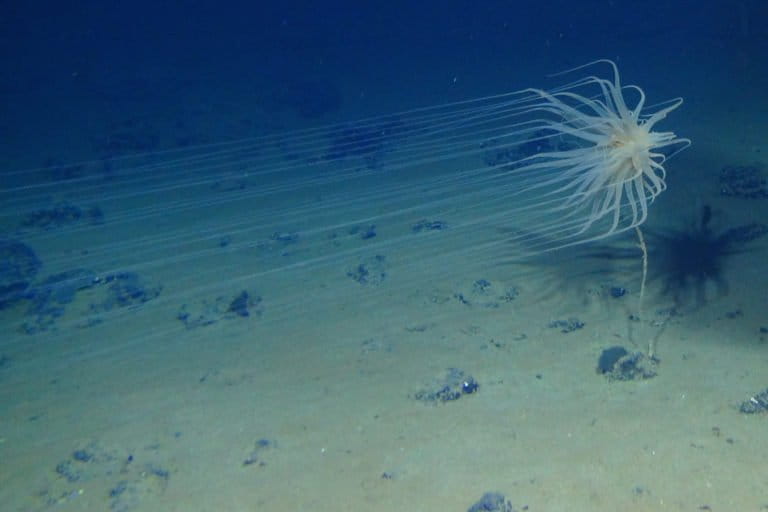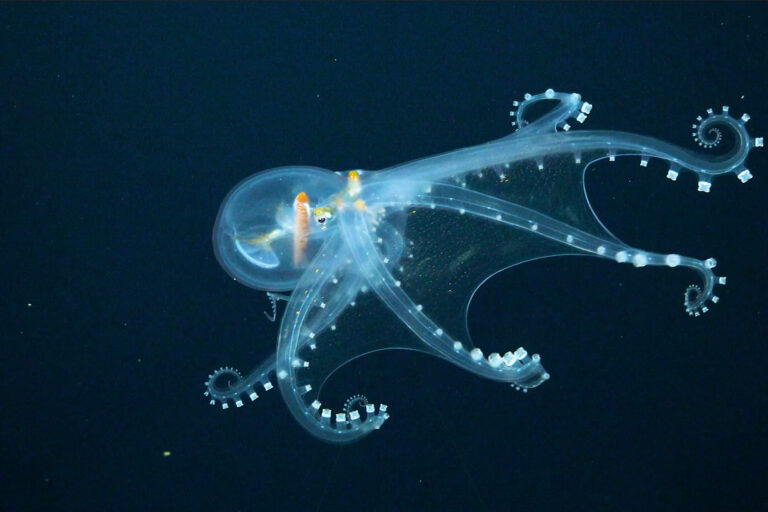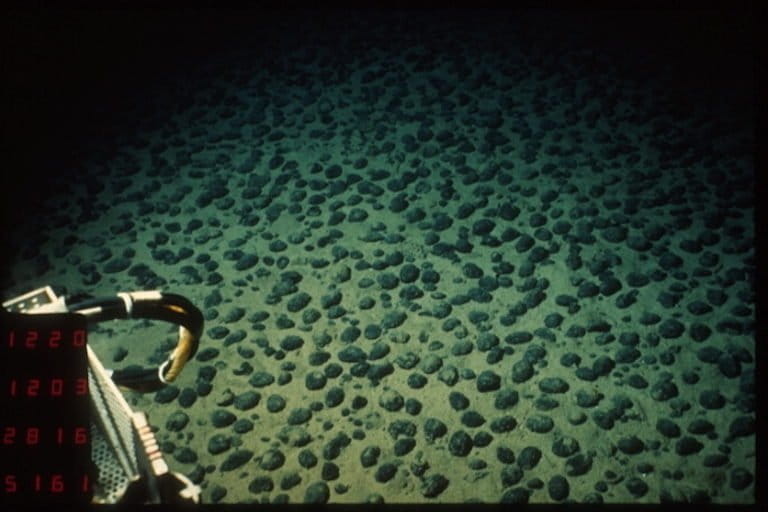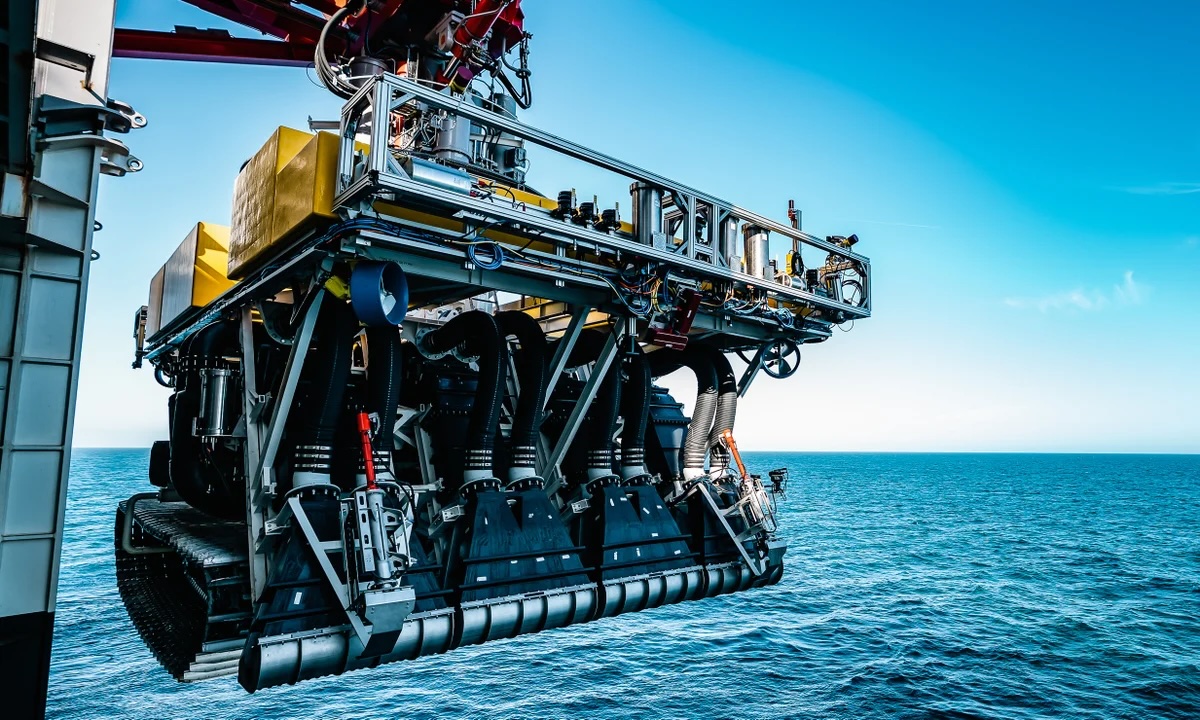- A new op-ed argues that the case for deep-sea mining is weak and also that the facts used by its proponents don’t add up, but rather cloud their judgment.
- The divergence between scientific understanding of likely ecological harms and prevailing narratives — like the touted economic benefits, which could actually be costs — came into sharp focus at the recent annual meeting of the International Seabed Authority, which governs the development of this industry.
- “Given the high costs and severe environmental risks, why then pursue deep-sea mining? This activity threatens unique deep-sea ecosystems and could irrevocably alter ocean health, impacting life on land,” the author writes.
- This article is a commentary. The views expressed are those of the author, not necessarily of Mongabay.
The deep sea, the planet’s most expansive and least understood ecosystem, remains largely unexplored. Yet while the deep sea may seem a dark and distant space, events underwater directly impact our lives, from essential services like climate regulation to fisheries and the marine food web. While scientific understanding of this realm is nascent, a new industry is rapidly emerging driven by the demand for rare metals essential for batteries, microchips and AI: deep-sea mining.
In the past three years, more than 38 nations have voiced support for a moratorium on deep-sea mining, a rapid pace by the standards of multilateral lawmaking, and the equivalent of one new country signing on per month. This progress marks a major shift from just a few years ago, when states were either supportive of mining, reluctant to take a position, or were simply uninformed.
The triggering of a treaty provision known as the “two-year rule” by the nation of Nauru in 2021, intended to accelerate deep-sea mining in areas beyond national jurisdiction, brought increased attention and scrutiny to the activity. Nevertheless, some private actors are pushing for the granting of applications for commercial deep-sea mining of minerals like copper, nickel and cobalt, despite significant concerns from global leaders, the scientific community and the public at large.

This divergence between scientific understanding and prevailing narratives came into sharp focus at the recent annual meeting of the International Seabed Authority (ISA). There, nations gathered to discuss matters profoundly consequential for the future of the deep ocean. However, there also seemed to be a broad understanding that a strong regulatory framework based on science, equity and precaution must be in place before an informed decision can be taken, and that no mining activities should commence in the meantime.
Moving forward, it’s imperative that we actively counter misinformation, significantly invest in scientific research, and, in the interim, take concrete measures to ensure that deep-sea mining activities do not commence in the absence of clear science, robust regulations, sufficient safeguards, and equity.
Here are the three main myths about deep-sea mining:
- ‘Deep-sea mining will provide an economic boom and promote global peace and security’
The primary justification for exploiting the seabed rests on a dubious economic premise: that mining’s financial gains will somehow outweigh its environmental costs. Yet, the economic case for deep-sea mining is tenuous at best, and expert indications suggest the burdens will far outstrip any tangible benefits. Deep-sea mining is an inherently capital-intensive endeavor, demanding massive amounts of upfront investment to take part in a high-risk, burgeoning industry. Developing and deploying specialized machinery capable of operating thousands of meters below the surface, under immense pressure and in corrosive conditions, presents unprecedented engineering challenges. The costs associated with exploration, environmental impact assessments, research and development, and then the actual extraction, processing and transport of minerals from such remote and hostile environments are projected to be staggering.
Some argue that deep-sea mining could bolster supply chain security for critical sectors such as defense, transportation, construction and energy. Given the vital importance of these industries to national security, the seabed’s mineral resources become intrinsically linked to the economic futures of nations like the U.S., which view them as a means to diversify mineral access: the majority of such mineral extraction occurs in regions like Africa, South America, Indonesia and Australia, and the supply chains for many of these critical minerals are currently dominated by geopolitical rivals like China, further intensifying the scramble to mine the deep.
However, it is naïve to think that deep-sea mining would address or alleviate global geopolitical tensions. If anything, the pursuit of unilateral deep-sea mining seems more likely to exacerbate fraught international relations, with the consequences spilling over to the global legal order more broadly. Countries should instead consider investing in a more circular economy, responsible sourcing and refining, encouraging innovation to be less metal-dependent, and developing multilateral frameworks to promote responsible and equitable international cooperation for critical metals and minerals.

- ‘Deep-sea mining will reduce or alleviate the environmental impact of terrestrial mining’
Another justification is that we will be able to move away from many of the environmental and social ills of terrestrial mining. While it is true that terrestrial mining has caused massive deforestation and led to severe human rights abuses in areas like the Democratic Republic of Congo, the idea that shifting mining activity to the sea will ease the pressure on land-based operations is misguided.
As deep-sea competitors arise to challenge the establishment of terrestrial mining, the increased competition will only serve to expand the global footprint of resource extraction and encourage operators to cut corners to stay competitive. When mining activity accelerates, the environmental and social harms produced are likely to follow, leading to an increasingly untenable situation where biodiversity is wiped out and the planet’s capacity to provide ecosystem services depleted. In this scenario, it is local communities and Indigenous groups in the Global South who will suffer most as they become dispossessed of the resources needed for survival, like forests for fuel and fish for food.
While the recovery and restoration of former terrestrial mining sites is possible, with governments increasingly mandating multiyear rejuvenation and rehabilitation projects, the situation in the deep sea is vastly different. Deep-sea recovery is limited and extremely slow on human timescales. Moreover, current scientific knowledge indicates that any restoration effort there would be difficult and cost-prohibitive, if not impossible.
Moreover, the environmental footprint of deep-sea mining activities, particularly for polymetallic nodule extraction — where a single mining project will involve extraction over a very large spatial area spanning thousands of square kilometers — will far exceed the footprint of terrestrial mining, which usually involves a very small and targeted area. If deep-sea mining were to alleviate or replace terrestrial mining, there would need to be multiple of such extraction projects — which would be disastrous for the marine environment and the planet.
The ISA is currently debating how to factor environmental externalities into contractor payments, as harm to these common heritage resources shouldn’t burden society. The requirement to compensate developing countries with large terrestrial mining industries for lost earnings, funded by ISA revenues, suggests the entire exercise could result in a net negative benefit.
See related: U.S. federal agency clears the way for deep-sea mining & and companies are lining up

- ‘Deep-sea mining is necessary for the energy transition’
The need for metals to power the energy transition is largely overstated by deep-sea mining advocates. Their arguments often cite expanding demand for electric vehicles and renewable energy, both cornerstones of the energy transition that currently require large supplies of rare-earth metals and minerals to craft the infrastructure needed to generate and store renewable power. For these advocates, deep-sea mining is presented as the sole means to access adequate supplies of crucial transition minerals.
However, these arguments are built on the false premise that demand for transition metals will continuously rise alongside our demand for energy. Advances in battery chemistry are already helping to reduce demand for cobalt, and circular solutions like recycling can further reduce our reliance on virgin metals obtained through mining, thereby challenging narratives that we are facing an unavoidable mineral deficit unless we turn to the deep seabed.
So, given the high costs and severe environmental risks, why then pursue deep-sea mining? This activity threatens unique deep-sea ecosystems and could irrevocably alter ocean health, impacting life on land. Scientists warn of irreversible damage from sediment plumes, habitat destruction and noise pollution to ecosystems formed over millions of years. Without sufficient baseline data, predicting or mitigating these risks is impossible, mandating caution under the precautionary principle.
Finally, the numbers also do not add up, which means financing deep-sea mining is akin to investing in a financial scam. If we are serious about tackling the unprecedented and existential threats that we are now facing, destructive activities like deep-sea mining surely cannot form part of the equation. It is therefore heartening to see many global leaders and governments voicing their concerns and calling for a pause or moratorium on deep-sea mining.
Pradeep Singh is an ocean governance expert at the Oceano Azul Foundation and holds degrees from the University of Malaya, the University of Edinburgh, and Harvard Law School.
Banner image: Equipment being tested for use in deep-sea mining. Photo by Richard Baron/The Metals Company.
See related audio from Mongabay’s podcast: Dr. Diva Amon discusses what we do and don’t know about the deep seas, her explorations of such zones, and the risks posed by mining proposals:
See related coverage from our special series on deep-sea mining:
See also:
U.S. federal agency clears ways for deep-sea mining — and companies are lining up


